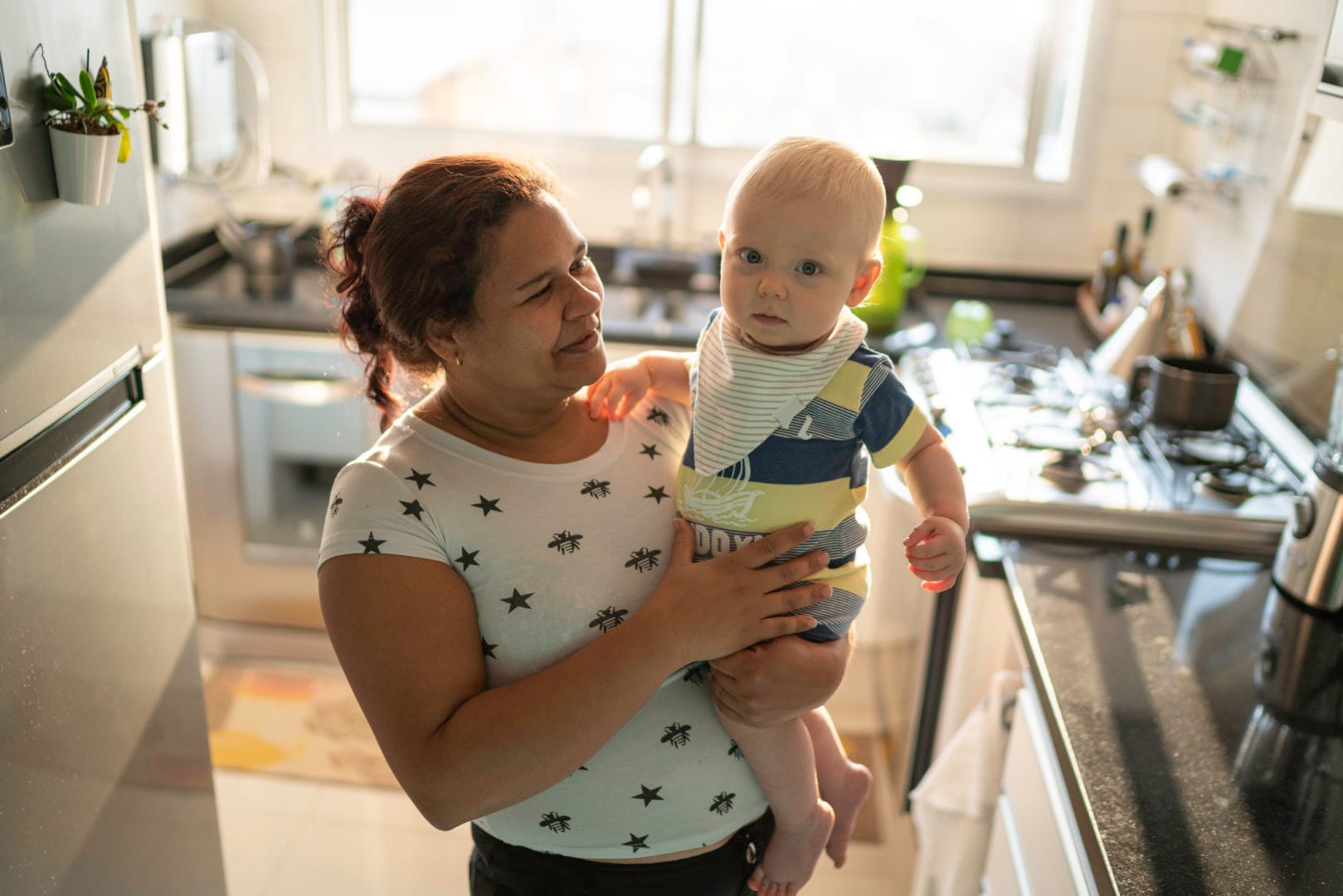In our vastly diverse and multicultural country, and increasingly our world, it’s pretty common to nanny for a family from a different cultural background. Whether you are an American nanny working for an American family from a different cultural background, an international nanny working for an American family or an American nanny working for an international family, cultural differences when it comes to child care are likely to arise.
In her research on cultural differences between parents and nannies, Patricia Greenfield, professor of psychology at the University of California, Los Angeles, identifies areas where Latina immigrant nannies, one of the largest demographics of caregivers, often deviate from the child-rearing approaches of their U.S. employers.
Here are a few examples of how these two culture’s differences, as identified in Greenfield’s study, might play out in child care:
-
How to put a baby to sleep (independent vs. held).
-
How much independence is expected of the children (tasks completion alone vs. with assistance).
-
How to communicate with kids (negotiation with a child as an equal vs. telling them what to do).
-
How children should play (adult-guided play in an educational direction vs. child-directed play).
For professional nannies, differences like these can be challenging to navigate, but that doesn’t mean they have to be approached as a disadvantage. With strong communication and clear expectations, you can positively leverage your experience and background in different cultural contexts and find ways to resolve any conflicting caregiving practices.
We interviewed four nannies who gave us an inside look at what it’s like to be a caregiver in a family from a culture that is different than their own. They share with us the biggest divergences in child care that arose and the tips and approaches they developed along the way.
1. A Mexican nanny and an American family
Myrka is a Nevada-based nanny of six years. She is originally from Valles, San Luis Potosi and spent much of her early childhood in Mexico before immigrating to the U.S.
Myrka says it took her some time to get acclimated to different expectations when caring for American children. She was caring for a 2-year-old and 4-year-old and had been with this family since the youngest child was an infant.
How “play” can look different
The biggest challenge, Myrka says, was getting accustomed to the cultural norms for play and adult-child interaction. “When I grew up, children usually played with other children or by themselves. It was new for me to be an adult engaging in play with the kids, especially infants,” says Myrka, noting the difference from her upbringing.
She also faced some behavioral challenges based on how the kids communicated. It was different than she was used to seeing.
Caregiver advice: Increase your communication
Myrka found it helpful to respond to these differences by communicating more openly with both the kids and the parents. Communication, she says, has been the most influential factor for dealing with challenges.
She started having more conversations with the children after understanding their need to verbalize their thoughts. She also learned to suggest new activities when current ones were not keeping toddlers engaged.
“Kids are more comfortable when they see that you have a relationship with their parents,” says Myrka. So she suggests building a healthy relationship with the parents where you can share and talk about your cultural differences.
Mryka also highlights respect as a critical foundation in finding resolution. “Work with families who respect and are open to you,” she says. “Respect and compassion are the key to working through cultural gaps with families and children, and it goes both ways.”
2. An American nanny and an Emirati family in Abu Dhabi
Abigail is a well-traveled nanny with 10 years of experience and training in working with children with special needs. She grew up in New Hampshire.
As the caregiver for four children between the ages of 3 and 10 in the Middle East, Abigail says she encountered a much different family structure from her western, middle-class New England upbringing.
When discipline looks different
For Abigail, the adjustment was not just a matter of culture but also one of socioeconomic status. “The main shocker for me was how wealth influenced the family dynamic,” says Abigail. “There were more people to interact with in the household beyond the parents. Each of the children had their own drivers and caregivers.”
One significant challenge, she notes: Abigail and the parents’ approaches to behavior issues were vastly different. When the parents were with the children, they gave rewards to children to stop inappropriate behavior while Abigail opted to limit privileges.
Caregiver advice: Consider a parallel approach
Both Abigail and the parents respected each other’s decisions, acknowledging that the children understood that their relationship with the nanny and parents were different. This allowed them to establish a parallel approach, in which the parents had their way of doing things with the children while Abigail was permitted to take a different approach more in line with her own culture and training.
“Having an American nanny was a status symbol,” says Abigail, regarding her specific situation in Abu Dhabi, “so I was often granted more privilege than the non-American house workers.”
Having this kind of autonomy allowed her to introduce new techniques for the children and other nannies to try.
Despite her freedom to do things differently, Abigail highly recommends having cultural awareness and sensitivity of any family you work with, especially for American nannies traveling outside of the U.S. Understanding social structures and norms will better help you avoid major conflicts that could be uncomfortable for you or the children.
Other adjustments Abigail made when working in Abu Dhabi included wearing the cultural attire when outside the home and educating herself on the Islamic religious practices expected of the children.
3. A Mexican American nanny and a U.S. Indian family
Eivet is an Atlanta-based nanny of five years. She embraces the integrated approach to cultural differences.
For two years, Eivet has been working with an 8- and 11-year old who love learning about her Mexican American culture while sharing their German and Indian culture.
How even smaller cultural differences can feel big
Eivet ran into some challenges around meal preferences and other small but impactful differences.
Because you’re their nanny, says Eivet, children might automatically expect you to know their preferences. “The kids do not know that you are unaware of how things are usually done,” she says.
“The parents wanted me to expose their children to different foods,” says Eivet, “but the children did not care for some of the Mexican foods I made. As a result, I usually cooked German or Indian options I knew how to prepare. The mom who was Hindi and vegetarian was OK with the children having meat, which made meal prep easier for me,” states Eivet.
Caregiver advice: Explore cross-cultural integration
Right away, Eivet started paying attention to the way the parents did things. “If I see a snack fixed a certain way, I take note, or if they have certain religious artifacts out like candles, I do not move them,” she explains. “Paying attention to the details helped me know what they were expecting and curbed suspicions that I was trying to change things or disregarding their culture.”
And because the family is open to Eivet sharing her language and food and Eivet is open to learning about the family’s religious holidays and rituals, she finds ways to integrate both cultures into the everyday without forcing or showing a preference for her culture over theirs. She says this approach has been great for better connecting and building trust with the children — and it’s been a healthy way to share their multicultural backgrounds.
4. A Colombian nanny and a multigenerational American family
Catalina, originally from Colombia, is a nanny of three years living with a family in New Orleans.
When she interviewed shortly after moving to the states, the parents loved the way Catalina interacted with their kids. Her employers embraced an integrated approach to culture where she often felt like part of the family and shared her culture with them. She enjoyed dancing with the two babies.
When extended family dynamics play a part
Catalina did not run into many challenges with the kids. Here difficulties arose during a period where the grandparents were also residing with the family.
“It was difficult getting the grandmother to respect my privacy,” says Catalina. “I had to reinforce boundaries when it came to having my personal time and space in the house.”
The biggest issue came up around care for the baby. The grandmother carefully monitored everything Catalina did with the baby and suggested her way or took over. “One of the areas we disagreed on was diaper changes. The grandmother wanted more changes than what was usually expected.”
Caregiver advice: Be adaptable
During this phase of her caregiving, Catalina remained sensitive to the extended family dynamic and stayed flexible. While her approach to dealing with the baby was accepted and integrated by the parents, Catalina learned to take a more parallel approach with the grandparents, permitting them to do what was comfortable for them when they were with the children.
“I was adaptable and went with the flow when [the grandmother] was present and resumed doing it my way when with the parents,” she says. “I accommodated the grandmother’s requests and responded to her the way the rest of the family did.”
Bottom line
While family dynamics, cultural contexts and childrearing expectations may differ, it is possible to establish ways of working with children that accommodate both the family’s desired practices as well as our own. That may require fully adopting the parent’s expectations sometimes while exercising more autonomy at other times.
In most situations, there is no one solution that works every time. What’s most important is that you communicate with your family and stay flexible and open to working together in an environment of respect and harmony, despite any culturally based differences in your approaches to child care.





